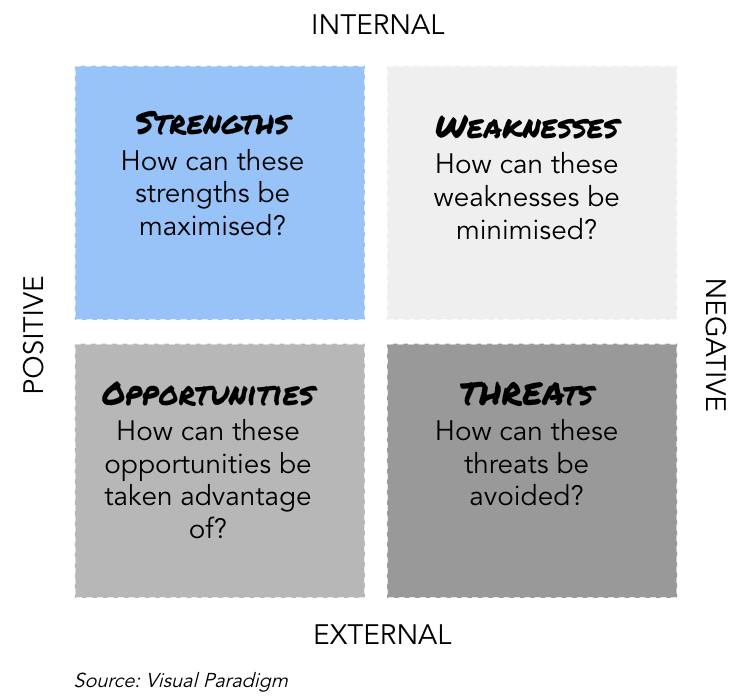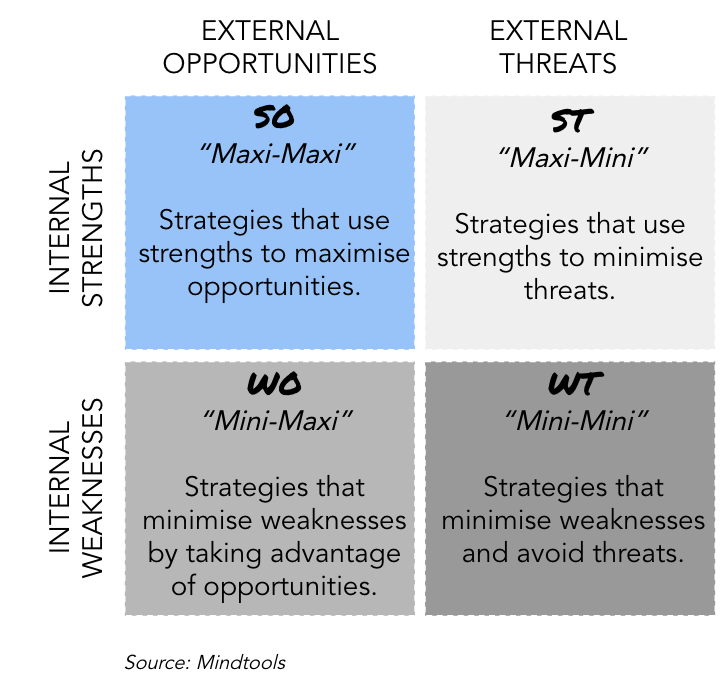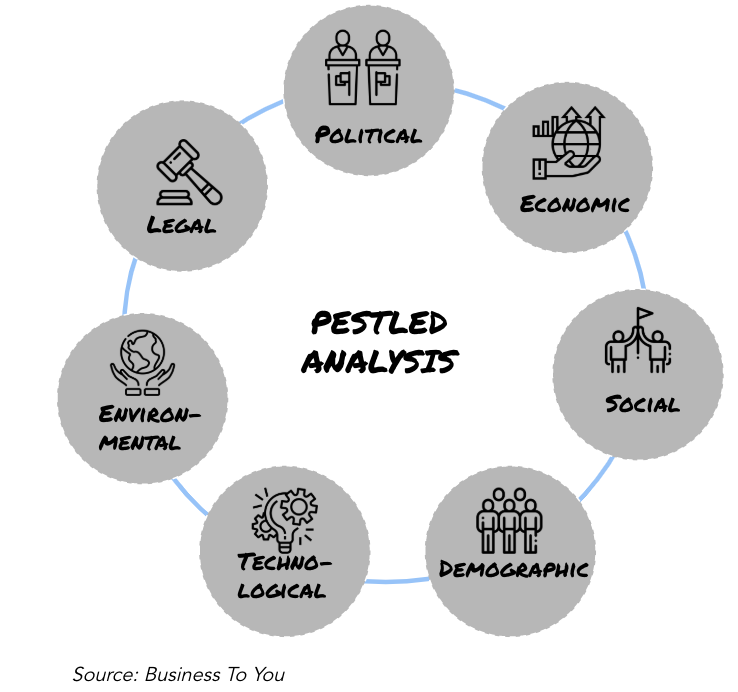Embarking on the journey of starting a company is a challenging task. Various factors, whether controllable by the entrepreneur or not, can influence the company’s survival.
Thankfully, there are numerous analytical tools available to help in making informed decisions. Here are the top five business tools that facilitate thorough analysis and enable actionable decisions:
SWOT analysis


Understanding the strengths and weaknesses of the company is crucial for enhancing value and minimizing potential losses.
The SWOT analysis is beneficial for evaluating both the company and its competitors. By recognizing internal strengths and weaknesses, one can establish a sustainable market position, identify opportunities for growth, and mitigate threats.
For further insights, entrepreneurs can utilize the TOWS Matrix to analyze the strategic options of the company.


This tool aids in identifying strategic alternatives by addressing various scenarios based on strengths, weaknesses, opportunities, and threats.
PESTLED


PESTLED is a comprehensive analytical tool that focuses on Political, Economic, Social, Technological, Legal, Environmental, and Demographic factors to assess the business environment.
By monitoring these macro-environmental factors, entrepreneurs can anticipate the impact on their company’s performance.
PESTLED is often used in conjunction with SWOT analysis and Porter’s Five Forces for a detailed understanding of internal and external environmental factors.
To utilize this tool effectively, entrepreneurs need to evaluate existing environmental conditions in each factor and classify them as opportunities or threats using the SWOT framework.
Ansoff’s Product Matrix

Ansoff’s Product Matrix offers four different growth strategies along with risk analysis to guide company expansion.
The safest strategy is Market Penetration in existing markets with existing products, while Diversification poses the highest risk by introducing new products in new markets.
For startup entrepreneurs, Market Penetration and Product Development are typically more relevant initially, followed by Market Development and Diversification after achieving success in the first two strategies.
Porter’s Five Forces

Porter’s Five Forces framework evaluates industry competitiveness by analyzing five key forces that shape industry dynamics.
By utilizing this model, entrepreneurs can comprehend industry structure, identify threats, and assess bargaining power within the market to devise profitable corporate strategies.
Porter’s Five Forces analysis helps in identifying potential threats, market share impacts, and determining price-setting strategies based on buyer and supplier bargaining power.
BCG Model (Growth Market Share Matrix)

 The BCG Model aids entrepreneurs in making strategic decisions regarding the product portfolio, determining investment priorities, and sustaining growth.
The BCG Model aids entrepreneurs in making strategic decisions regarding the product portfolio, determining investment priorities, and sustaining growth.
The model classifies products based on market share and growth potential, guiding decisions on investing, eliminating, or developing products within the portfolio.
The interpretation of quadrants within the BCG Model helps in strategizing product management for long-term success.
Speed is crucial for startup success, and leveraging these analytical tools provides a comprehensive view of the company, enabling proactive decisions to outpace competitors.
–
Editor’s note: e27 publishes relevant guest contributions from the community. Share your honest opinions and expert knowledge by submitting your content here.
Join our e27 Telegram group here, or our e27 contributor Facebook page here.
The article was first published on August 27, 2019.
The post 5 analytical tools that entrepreneurs can use to scale appeared first on e27.
